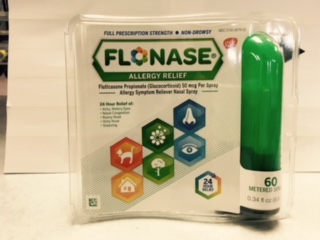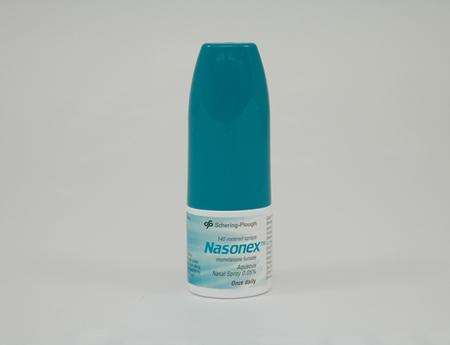Contents
- What is Flonase? What is Nasonex?
- Are Flonase and Nasonex same thing?
- How Flonase vs Nasonex works
- Flonase and Nasonex Uses
- Flonase and Nasonex available dosages and forms
- Flonase side effects
- Nasonex side effects
- Can you buy Flonase and Nasonex over the counter?
- Flonase and Nasonex price
- Who can use these products?
- How should Flonase and Nasonex be used?
- How many times and how often can patients take Flonase and Nasonex?
- How long does it take for Flonase and Nasonex to be effective?
- What if I overdose Flonase or Nasonex?
- What if I missed the dose of Flonase or Nasonex?
- How long both products should be used?
- How long do Flonase and Nasonex stay in your system?
- Can I take Flonase and Nasonex with Zyrtec?
- Can I take Flonase and Nasonex with Benadryl?
- Can I drink alcohol while taking Flonase or Nasonex?
- Can I use Flonase or Nasonex if I have a bloody nose?
- When you cannot absolutely use Flonase and Nasonex?
- What are the alternatives for Flonase and Nasonex?
- Are Flonase and Nasonex addictive?
What is Flonase? What is Nasonex? |
|
| Flonase is a Brand name for a nasal spray containing fluticasone as an active ingredient. Fluticasone is a corticosteroid drug that prevents the release of substances in the body that can cause inflammation.
Nasonex is a Brand name for a nasal spray containing corticosteroid drug mometasone as an active ingredient. This drug prevents the release body substances that can cause inflammation. |
|
Are Flonase and Nasonex same thing? |
|
| They are both intranasal corticosteroids, with similar chemical structure and have similar effects and almost the same indications. Both drugs belong to the group of second generation intranasal corticosteroids, which means that they can less cause systemic side effects compared to first generation corticosteroids..
But, they are not the same drugs. Flonase contains fluticasone as an active ingredient while Nasonex contains mometasone. The major difference between these two drugs is that Nasonex in indicated for the treatment of nasal polyps in adults while Flonase is not. Also, Flonase can’t be used in children younger than 4 years while Nasonex can, but general recommendation is that Nasonex can’t be used in children who are younger than 2 years of age. Another difference is their appearance in systemic circulation. Flonase systemic bioavailability is less than 2% compared to Nasonex < 0,1% which is the lowest level of all intranasal corticosteroids drugs. Flonase is also available in Generic form while Nasonex is not. |
|
How Flonase vs Nasonex works |
|
| Corticosteroids work by binding to the glucocorticoid receptors. Unbound molecule of corticosteroid can pass the cells membranes of mastocytes and eosinophils binding with high affinity to glucocorticoid receptors.
The results of corticosteroid-receptor interaction are next processes: transcription, alteration and protein synthesis, reduced release of enzyme hydrolases, collagen deposition reduction, leukocyte adhesion to the capillary wall interference, fibroblast proliferation reduction, prevention of macrophage accumulation into inflammation sites, inhibition of proinflammatory substances such as kinin and histamine release, reduction of capillary membrane permeability and edema, decrease of complement components, and interference with scar tissue formation. |
|
Flonase and Nasonex Uses |
|
| Flonase indications are: runny nose, sneezing, nasal congestion, watery or itchy eyes caused by seasonal or year-round allergies.
Nasonex is used for the relieving allergy nasal symptoms such as: congestion, sneezing, and runny nose. It is also used for the prevention of seasonal allergy symptoms in adults and children older than 12 years. Nasonex nasal spray can be also used to treat nasal polyps in adults. |
|
Flonase and Nasonex available dosages and forms |
|
| Both, Flonase and Nasonex are available in a form of 0,05% nasal spray. | |
Flonase side effects |
Nasonex side effects |
|
|
Can you buy Flonase and Nasonex over the counter? |
|
| Flonase and Nasonex are available without prescription. Patients can buy these products over the counter. | |
Flonase and Nasonex price |
|
|
|
Who can use these products? |
|
|
|
How should Flonase and Nasonex be used? |
|
| To use Flonase or Nasonex nasal spray properly, patients should follow next steps:
1. Remove the cap from the bottle and shake the bottle gently. 2. If you are using the pump for the first time you must prime the pump. Press and release the nozzle to release 5 sprays into the air away from the face. If you have not used it for 2 weeks or longer, press and release 1 spray into the air away from the face.
|
|
How many times and how often can patients take Flonase and Nasonex? |
|
|
|
How long does it take for Flonase and Nasonex to be effective? |
|
| Patients should know that Flonase and Nasonex can control symptoms of their allergies and hay fever but these drugs do not cure these conditions. Patient’s symptoms may improve on the day they start using spray, but usually it may take up to 1 week of daily use before patients begin to feel the full benefit of these drugs. If symptoms do not improve after 1 week, patients should call their doctor. | |
What if I overdose Flonase or Nasonex? |
|
| Flonase or Nasonex overdose is not expected to cause life threatening side effects. However, if those steroids are used for a long term period, they can cause symptoms such as easy bruising, thinning skin, changes in location of body fat especially in face, back, neck, and waist, menstrual problems, increased acne or facial hair, impotence, or decreased libido.
If someone swallows Flonase or Nasonex nasal spray, local poison control center at 1-800-222-1222 should be called. If the victim has collapsed or is not breathing, local emergency services at 911 should be called. |
|
What if I missed the dose of Flonase or Nasonex? |
|
| Patients should take the missed dose as soon as they remember it. However, if it is almost time for the next dose, patients should skip the missed dose and continue with their regular dosing schedule. Patients should never use double dose to make up for a missed one. | |
How long both products should be used? |
|
| Patients should not use Flonase or Nasonex for more than 1 week, unless their doctor prescribed them otherwise. | |
How long do Flonase and Nasonex stay in your system? |
|
| · Half-life time of fluticasone after intravenous administration is 7.8h. After intranasal administration it is expected that half-life should be much shorter.
· Afer intravenous administration, the effective plasma elimination half-life of mometasone furoate is 5.8 h. After intranasal administration it is expected that half-life should be much shorter. |
|
Can I take Flonase and Nasonex with Zyrtec? |
|
| Even there are no dangerous interactions between Zyrtec and Flonase or Nasonex, those products can be used together for the treatment of seasonal allergies, however patients always need to consult their doctor or pharmacist first.
These drugs work pretty well together in treating symptoms associated with allergic rhinitis. Zyrtec is second generation antihistamine and has far less side effects such as sedation and drowsiness compared to older antihistamines. However, patients need to see an allergist first for more definitive treatment options. |
|
Can I take Flonase and Nasonex with Benadryl? |
|
| Since there is no direct interaction, Nasonex or Flonase can be taken in combination with Benadryl. Intranasal corticosteroids such as Flonase and Benadryl are the first line treatment for allergic rhinitis, but sometimes patients need more than a spray for better relieving of their symptoms, so adding an antihistamine drug such Benadryl is acceptable and quite common.
These drugs do not interact and both work to help patient’s allergy symptoms. Patients should use the smallest effective dose when needed for a short time period. |
|
Can I drink alcohol while taking Flonase or Nasonex? |
|
| There are no major interactions between alcohol and nasal corticosteroids, if they are used for a short time period. However if intranasal steroids such as Flonase and Nasonex are used for more than a week, alcohol can potentiate side effects of these drugs.
Also, many patients who use intranasal steroids also use antihistamines for their allergy symptoms relief. Combination of alcohol and antihistamines can alter antihistamine sedative effects. |
|
Can I use Flonase or Nasonex if I have a bloody nose? |
|
| Patients should never take these products if they have bloody nose. Active substance can be absorbed from the broken blood vessel into systemic circulation and may cause systemic side effects. Also, nose bleeding is most common limiting side effect of nasal steroid spray. Patients should stop using these products if their nose becomes to bleed, and they should call their doctor immediately. | |
When you cannot absolutely use Flonase and Nasonex? |
|
| Patients who have tuberculosis or any other infection, herpes simplex virus of the eyes, sores and ulcers inside their nose, frequently nose bleedings, glaucoma or cataracts, liver disease, or patients who have recent surgery or nose injury, children younger than 2 years should not use these products. | |
What are the alternatives for Flonase and Nasonex? |
|
|
|
Are Flonase and Nasonex addictive? |
|
| Intranasal corticosteroids are not addictive substances. True addiction is a compulsive physiological need for and use of a habit-forming substance known to be physically, psychologically or socially harmful. OTC nasal sprays don’t cause the physiological desires that mark an addiction.
However, after a few days of administrating nasal sprays, in some patients, nose may become less responsive to the effects of nasal sprays. However, this is more common in patients using nasal decongestant, and it is generally not usual for corticosteroids. As a result, patients may need to use more and more to control congestion. Congestion may also worsen if patient stop using these products. This is called a rebound effect, not addiction. That’s why patients should not use these products for more than a week, and always as directed by doctor or pharmacist. |
|
“How does Nasacort compared to Flonase?“
“Can I take Flonase and Sudafed together?“
“What is the difference between Eliquis and Warfarin?“


